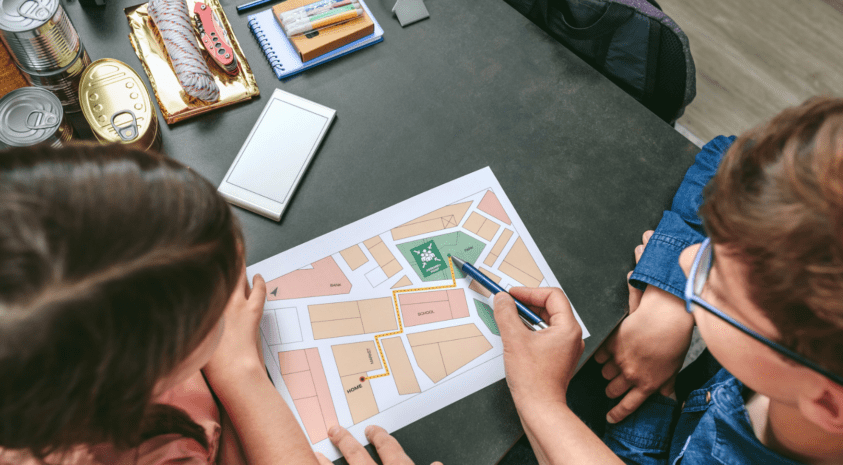We’ve seen the devastating footage of the wildfires in Maui, Hawaii and how residents and visitors were given zero notice of the impending emergency.
When an emergency strikes like this and you need to flee, would you know where to meet up with your family or loved ones? Having an emergency contact, preparedness and evacuation plan is key to situations like these and although it may not change the situation, it can help keep you in touch and find loved one faster.
We’ll cover what you need to do to create a plan and how to implement it.
Step 1: Understand the Emergency Risks of Your Area
Before creating an emergency plan, it’s important to assess the potential risks in your specific area. Research and understand the types of disasters that could occur where you live like wildfires, earthquakes, floods or hurricanes. Once you’re aware of the risks, you can tailor your plan to address these specific threats though the people of Maui likely never thought they’d face wildfires so consider all types of disasters to your plan. With climate changes, what was once never thought of as an issue for a certain area may be at play now. You may want to check out the National Risk Index for Natural Disasters section of the Federal Emergency Management Agency (FEMA) website to get an idea of what you could face.
Step 2: Compile Important Information
Gather all essential information needed in case of an emergency. This includes contact information for each family member, close friends and relatives. Make sure you have updated phone numbers, email addresses and social media profiles. Additionally, keep a list of important medical conditions, allergies and medications for each family member.
Step 3: Designate Meeting Points
Determine multiple safe meeting points both within your neighborhood and outside of it. In case your family members are separated during an emergency, these meeting points will serve as a location to connect. Consider a primary meeting spot close to your home and a secondary one further away, as circumstances might prevent access to certain areas. If you have children or grandchildren make sure they understand where these areas are and how to get there.
Step 4: Form a Communication Plan
Decide on a reliable method of communication. Cell phone networks may be overloaded or totally wiped out during an emergency, so have alternatives like walkie-talkies or designated social media groups. Set a communication hierarchy, so each family member knows whom to contact and in what order.
Step 5: Know Your Evacuation Routes
Map out evacuation routes from your home to the designated meeting points. Be familiar with different routes and modes of transportation, as roads might be blocked or congested. If your area is susceptible to wildfires, identify multiple escape routes to ensure a safe exit.
Step 6: Create an Emergency Kit
Prepare an emergency kit that includes essential supplies for your family to survive for at least 72 hours. This kit should include water, non-perishable food, a first aid kit, medications, clothing, flashlights, batteries, hygiene items, important documents (IDs, insurance policies, passports, birth certificates, etc.) and portable phone chargers that are always kept charged. Don’t forget your pets either. It might make sense to keep pet carriers and emergency stashes in the same area of a garage or basement and keep your important documents in an easy to grab location. Better yet, make copies to keep in a waterproof zipped travel pouch so you can grab and go at a moment’s notice.
Step 7: Stay Informed
Stay informed about potential threats through reliable sources such as weather apps, local news, and emergency alerts. Sign up for community notification systems and ensure that everyone in your family is aware of emergency protocols.
Step 8: Conduct Regular Practice Drills
Practice makes perfect, especially in emergencies. Conduct regular drills for various scenarios and go over the plan so your family will be so familiar they won’t need to think much and will be able to react quickly if they ever faced the real thing. Practicing also helps address any oversights or issues in the plan that need to be fine-tuned.
Step 9: Reevaluate and Update:
Periodically review and update your emergency plan. Circumstances can change over time, like when a family member moves or changes their contact information so make sure your plan remains current. It’s also important to adjust your plan and add or remove parts that might not be relevant anymore.
Want more tips to prepare for emergencies? Check out our blog Tornadoes, Snow, Water Bans and More: 11 Tips to Prepare for Emergencies
We’re here for you!
Bankers Life is here to help customers with their financial and insurance needs so please visit us at BankersLife.com to learn more.



